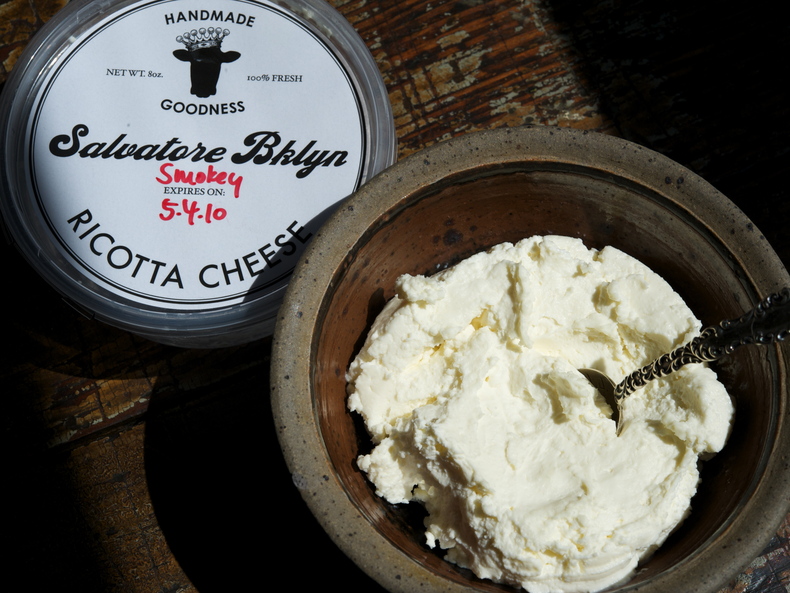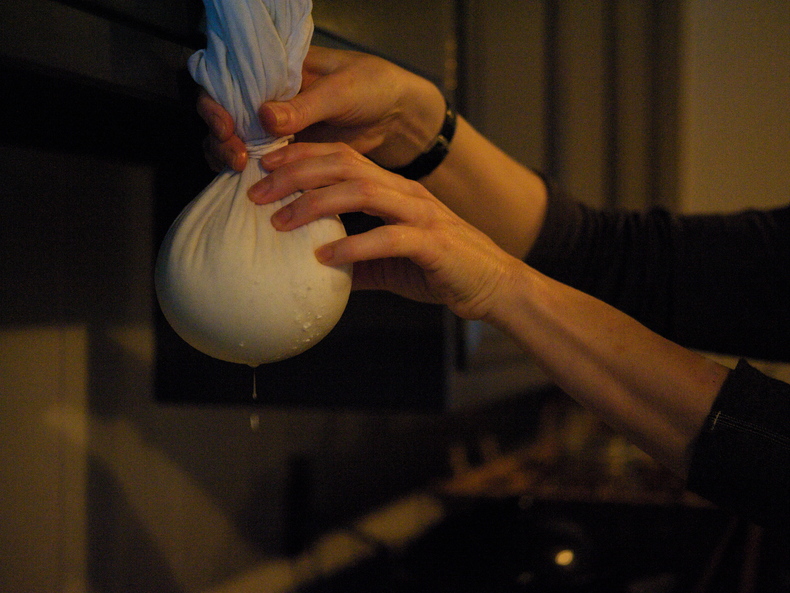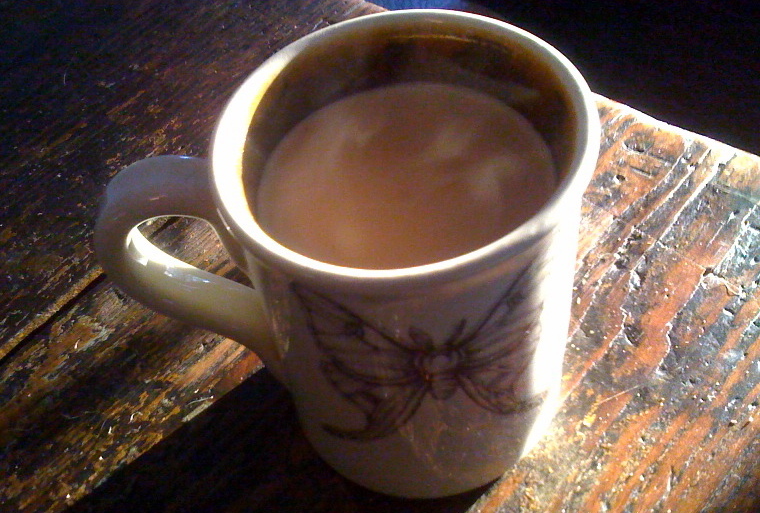You know how biscotti means “twice cooked” in Italian? Well, ricotta means “re-cooked.” I never knew why until I decided to investigate this wonderful light cheese. We associate it with Italian cooking but it's also traditional around Hanukkah, used to stuff blintzes or in cheesecake. It turns turns out that ricotta is made from whey, the low-fat and nutritious liquid that is a by-product of cheese production. Once cheese is made from the curds, a second cooking of the whey results in ricotta. I’ve actually perused quite a few recipes for ricotta, and hardly any mention this. They all call for making it with whole milk, some even adding cream, but this is not the traditional way and results in something quite a bit richer, albeit delicious, that is more along the line of farmer's cheese or fromage blanc. Splitting hairs, you say. And you may be right. If you're not making fresh cheese you probably won't have whey availalbe, so go ahead and make your rich and delicious ricotta from whole milk. (Try the recipe below.) Or buy the sinful version from Salvatore Brooklyn. They also have a smoked one that will make your toes curl under.
Read More...
Twitter @glutton4life
2.8.10 Curds & Whey
This little Miss Muffett definitely enjoys eating freshly made curds. And so will you, when you make your own paneer (also spelled panir). This is that soft white cheese used in Indian cuisine. You probably know it from saag paneer, the Indian cousin of creamed spinach. Making paneer is quite similar to making ricotta, if you've ever done that. Even easier. It's just a simple coagulation of milk through the use of acid; lemon juice, in this case. The milk "breaks," separating into fluffy white curds and cloudy liquid whey. You gather the curds up into a clean cloth (cotton towel or cheesecloth) and hang it so that liquid drains away. If you leave it fairly soft—with a bit more liquid—it's known as chenna; taken to a firmer stage, it becomes paneer. It's delicious in rich curries, fritters, or simply cooked with vegetables like peas, chiles or greens.
Read More...
Read More...
1.14.10 Rise & Shine
Fresh juice is a great way to start the day. You've probably already read my proselytizing about the many benefits of ingesting live, vital vegetable and fruit juices. (Quick primer: you get energy, antioxidants, digestive health, clear skin.) But on these frigid days, something warming does seem in order. I'm not a coffee drinker, never have been, though I do enjoy the occasional cup (especially as a vehicle for cream and sugar), but I am partial to chai. Actually, chai simply means tea. It derives from cha, the Chinese word for tea. What I'm really talking about here is masala chai—masala being an Indian word for spice blend. In India, masala chai is drunk like we drink coffee. It’s sold on the streets by chaiwallahs (and I think you all know what that is, having sat through Slumdog Millionaire.) Instant chai is available, but it tends to be loaded with sugar and fake flavorings. I’ve been known to order a soy chai latte from Starbuck’s (oh, the shame) and the best I can say about it is that it’s not very authentic. One prepared version I do like is from the venerable French tea company, Mariage Freres, called Chandernagor after the former French colony north of Kolkata (Calcutta). It’s a classic blend of black tea with cinnamon, cloves, ginger, green cardamom and black pepper. Sometimes chai will also include ajwain, a pungent relative of caraway; allspice; coriander; bittersweet chocolate; fennel, star anise or licorice root; nutmeg; and vanilla. My favorite tea to use in a chai blend is an Assam, whose assertive taste and slight smokiness can stand up to all the spices. Rooibos tea makes a pretty good caffeine-free alternative. Why not make your own masala chai blend in quantity and store it in a jar or tin? Then you can simply steep it in a combination of milk (cow, goat, soy) and water, adding whatever sweetener you like. I use honey, but sugar, agave nectar or even sweetened condensed milk work well. The spices really enhance the warming effect, and are a great way to get your blood moving on these cold winter mornings.
Read More...
Read More...










